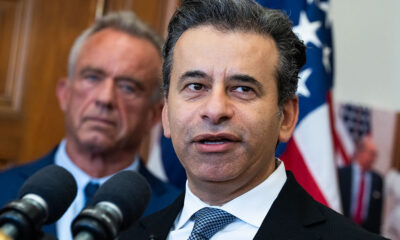World
Relief Efforts Intensify Following Hurricane Melissa’s Devastation
Rescue and aid operations in Jamaica are ramping up as communities continue to face severe challenges following the impact of Hurricane Melissa. The hurricane made landfall on March 5, 2024, as a Category 5 storm, bringing with it winds of up to 185 mph (295 kph). Four days later, many areas remain isolated and in dire need of assistance.
Efforts are underway to deliver essential supplies, including food and water, to the most affected regions, particularly St. Elizabeth and Westmoreland. These areas were largely cut off due to fallen trees and damaged infrastructure. In some locations, residents resorted to collecting water from rivers, while others have turned to scavenging for food, such as coconuts and roasted breadfruit.
Pearnel Charles Jr., Jamaica’s Minister of Social Security, has been actively involved in coordinating the distribution of ready-to-eat meals, water, tarpaulins, and blankets. The devastation caused by Hurricane Melissa has disrupted power lines, destroyed buildings, and wreaked havoc on agricultural fields. Over 60% of the island remains without electricity, and residents are walking long distances to find basic necessities and check on family members.
Christopher Tufton, the Minister of Health, acknowledged that the death toll in Jamaica, currently at 19, may rise as many areas are still difficult to access. He cautioned against speculation but emphasized the potential health risks, including increased mosquito populations and waterborne diseases. “Please discard spoiled food,” he urged residents.
The U.S. Embassy in Jamaica announced that a regional disaster assistance response team has been activated to aid recovery efforts. Secretary of State Marco Rubio confirmed the United States’ commitment to supporting Jamaica in the aftermath of the hurricane, stating that they are prepared to deliver emergency relief swiftly.
In a call for assistance, Matthew Samuda, Jamaica’s Minister of Water and Environment, took to social media to locate tarpaulins needed to replace roofs torn off homes. His plea attracted numerous responses from users indicating where supplies could be found.
Falmouth, a popular coastal town, suffered significant damage, including severe flooding and collapsed buildings. Prime Minister Andrew Holness highlighted the immediate need to restore electricity and communication services and stabilize essential operations at the Falmouth Hospital. He expressed optimism about rebuilding the island “stronger and wiser” post-disaster.
Following the hurricane’s destruction, the Caribbean Catastrophe Risk Insurance Facility (CCRIF) announced a record payout of $70.8 million to Jamaica. This financial support, expected within 14 days, comes as part of a risk-pooling strategy to help countries manage the financial repercussions of natural disasters.
Finance Minister Fayval Williams indicated that the CCRIF payout is just one element of the government’s broader financial strategy to address natural disasters. This strategy includes a contingency fund, a national natural disaster reserve, and a catastrophe bond. Assessments of the damage are still ongoing, underscoring the extensive impact of Hurricane Melissa on Jamaica’s infrastructure and communities.
-

 Science2 weeks ago
Science2 weeks agoResearchers Challenge 200-Year-Old Physics Principle with Atomic Engines
-

 World2 weeks ago
World2 weeks agoGlobal Military Spending: Air Forces Ranked by Budget and Capability
-

 Entertainment1 week ago
Entertainment1 week agoSyracuse Stage Delivers Lively Adaptation of ‘The 39 Steps’
-

 Politics2 weeks ago
Politics2 weeks agoNHP Foundation Secures Land for 158 Affordable Apartments in Denver
-

 Politics6 days ago
Politics6 days agoNFL Confirms Star-Studded Halftime Show for Super Bowl LVIII
-

 World1 week ago
World1 week agoBoeing’s Aircraft Production: Assessing Numbers and Challenges
-

 Lifestyle6 days ago
Lifestyle6 days agoTrump’s Push to Censor National Parks Faces Growing Backlash
-

 Lifestyle1 week ago
Lifestyle1 week agoRed Bluff High School’s Elli Nolan Named Rotary Student of the Month
-

 Health2 weeks ago
Health2 weeks agoNeuroscientist Advocates for Flag Football Until Age 14
-

 Top Stories1 week ago
Top Stories1 week agoUrgent Search for Suspect Who Exposed Himself to Teen Girl
-

 Health2 weeks ago
Health2 weeks agoFDA Launches Fast-Track Review for Nine Innovative Therapies
-

 Lifestyle2 weeks ago
Lifestyle2 weeks agoLongtime Friends Face Heartbreak After Loss and Isolation









